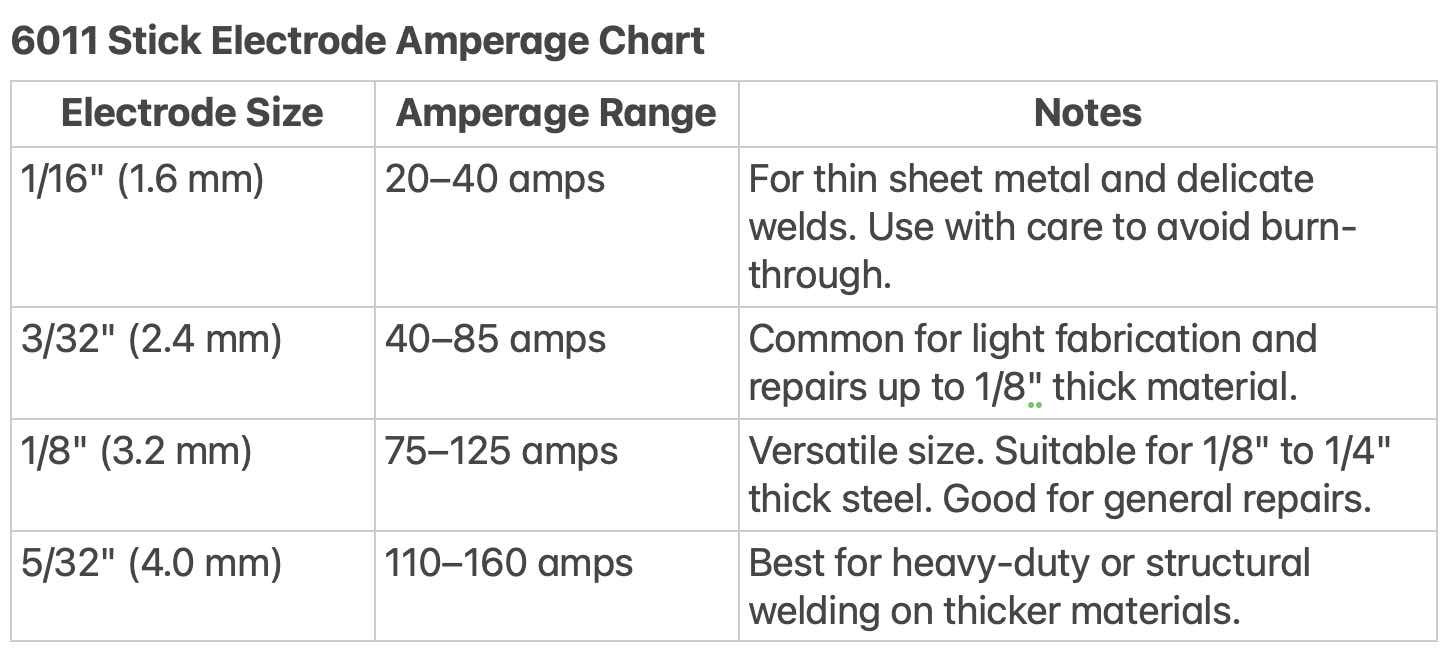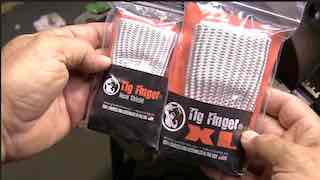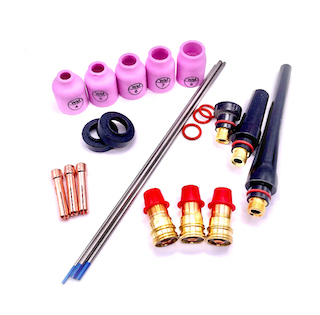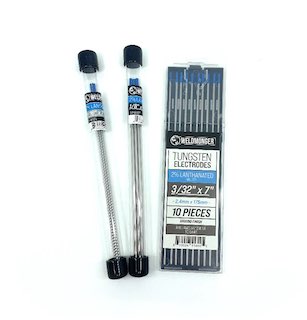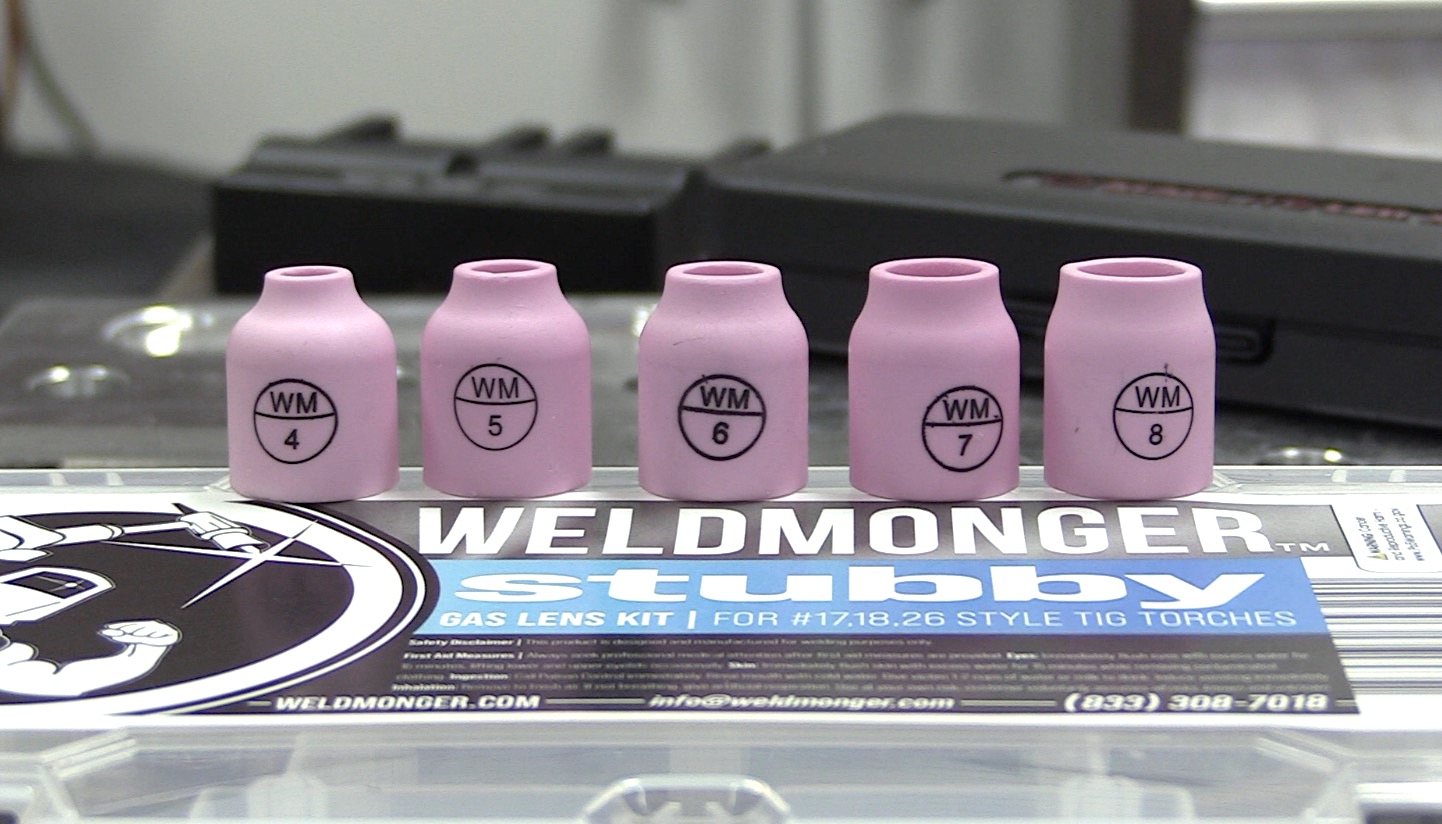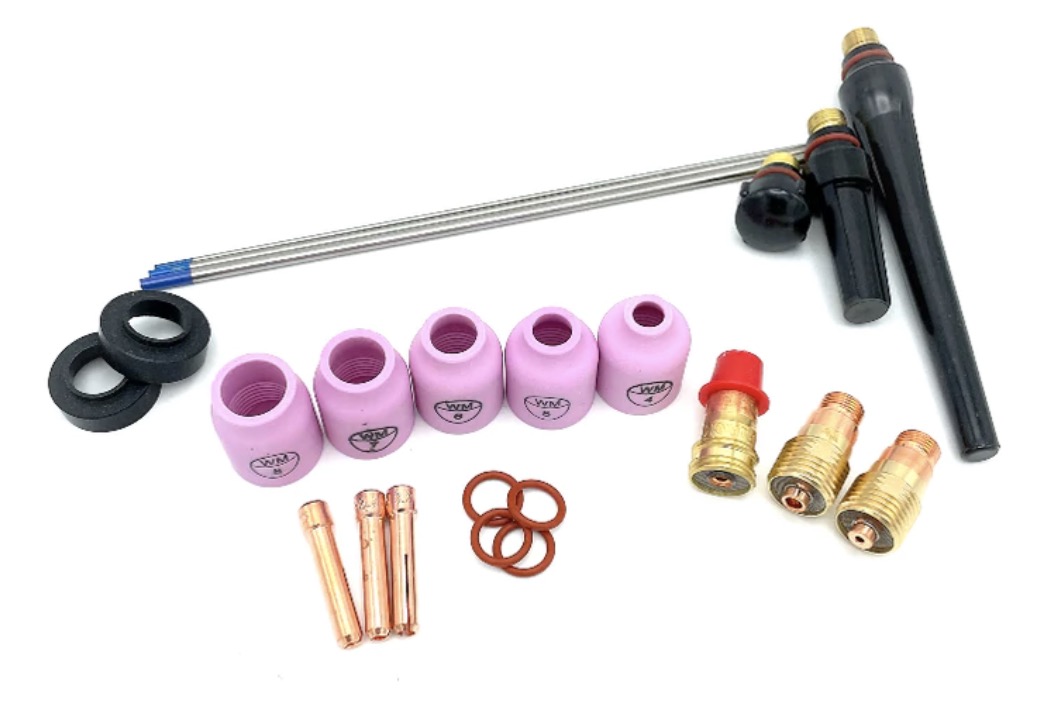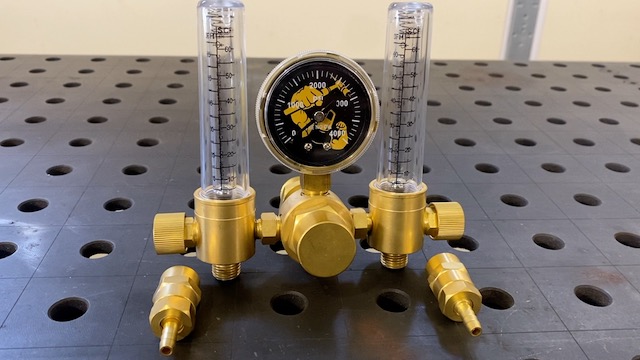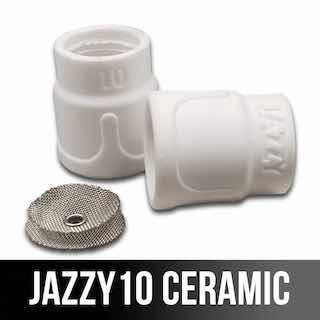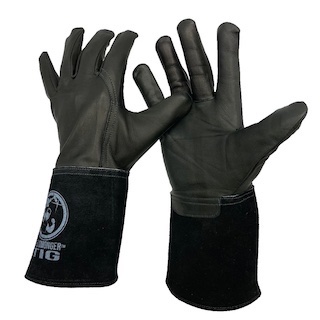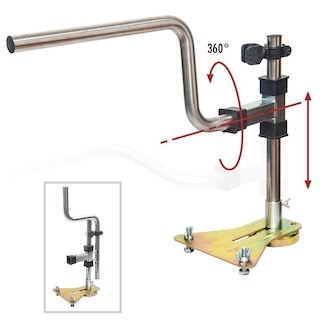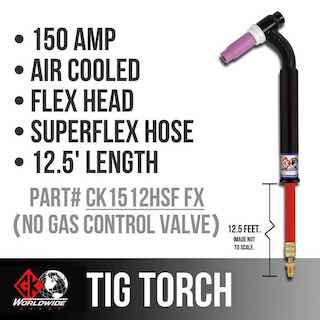6011 welding rod amperage for 1/16", 3/32", 1/8", and 5/32"
Watch the latest welding videos at Weldmonger.com
- HOME
- STICK WELDING
- 6011 Welding Rod Amperage
Electrode Size
1/16" (1.6 mm)
3/32" (2.4 mm)
1/8" (3.2 mm)
5/32" (4.0 mm)
Amperage Range
20–40 amps
40–85 amps
75–125 amps
110–160 amps
Tips for setting amperage with 6011:
- Start at the middle of the range and adjust upward if the arc is unstable or the rod sticks.
- Use lower settings for vertical uphill welding.
- Always practice on scrap material and test your welds before welding critical joints.
6011 rods are suitable for most inverter welders, engine-driven welders, and AC buzz boxes.
1/16" 6011 amperage range 20–40 amps
Many people are not even aware that 6011 rods are available in the small 1/16" diameter.
They are great for thin sheet metal and even automotive exhaust pipe in pinch.
They can also get you out of a bind when you need to make a small weld repair using a weak 115 volt plug because they need so little amperage.
I remember one specific job where I needed to weld a one inch repair on a porch spindle as a favor for a brother in law. All I brought with me was 1/8" 6011 and I kept popping the 15 amp breaker with my little inverter stick welder. 1/16" 6011 would have been great for that job.
3/32" 6011 amperage range 40–85 amps
3/32" 6011 are especially handy rods to have where 1/8" rods push the limit on the 115 volt circuit.
They run well uphill as well as downhill
1/8" 6011 amperage range 75–125 amps
1/8" 6011 run almost like 6010 but will work on small inverter welders where 6010 often will not.
6010 are superior for root passes in pipe but for general portable welding repairs 6011 can be a more versatile rod.
6011 rods also work well with AC buzz box welders making it popular with hobby welders and farmers.
5/32" 6011 amperage range 110–160 amps
When welding 3/16" and thicker metal a 5/32" 6011 lays down a bigger single pass fillet weld
I helped a machinist friend set up shop and the first thing he wanted me to do was to fabricate a metal rack out of used heavy wall 4 inch angle iron.
All we had available to work with was a cutting torch, a Lincoln Tombstone AC buzz box welder, and a box of 5/32" 6011 rods.
I learned that day just how well 5/32" 6011 rods work for fabricating.
6011 rods run off any polarity...
DCEP, DCEN, and AC
DCEP aka Reverse polarity is said to get deeper penetration but my own testing revealed that depth of penetration only varies slightly whether using DCEP, DCEN, or AC.
